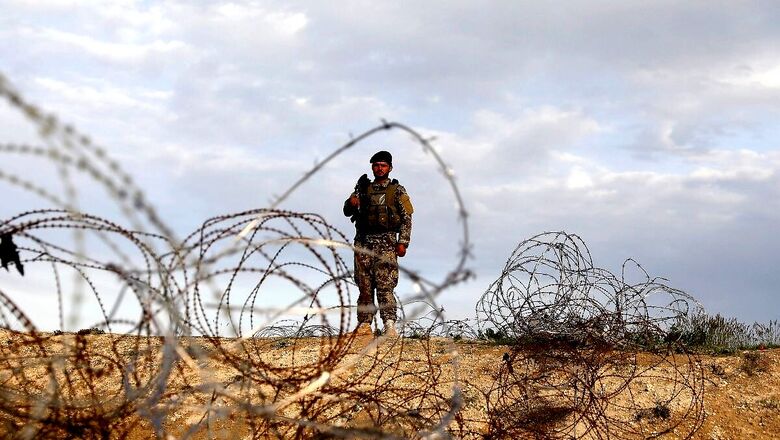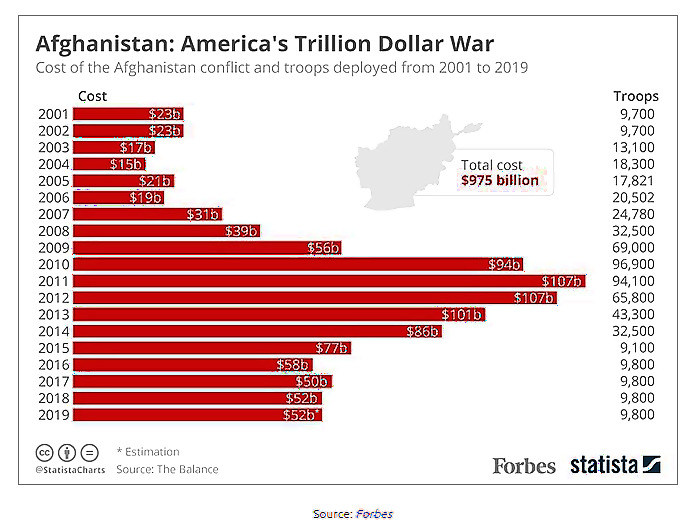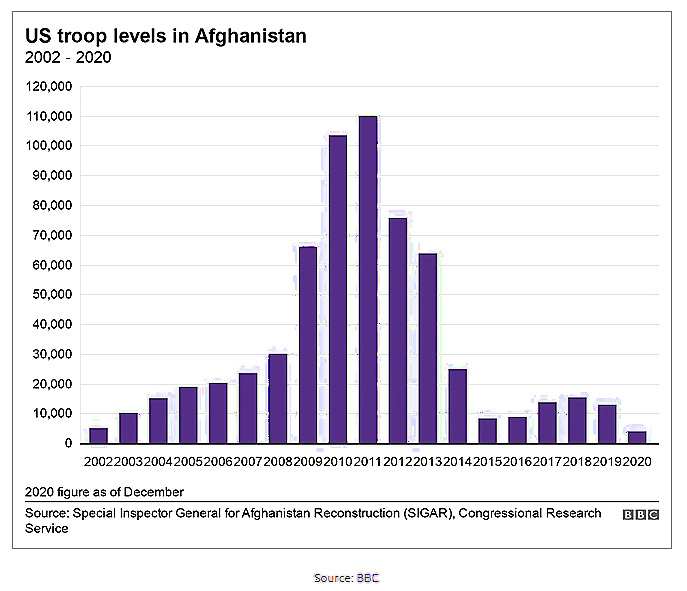
views
Despite the American intelligence assessments that the Afghan government could fall to the Taliban in as little as six months’ time, President Biden expressed faith in the civilian leaders in Kabul, whom he met last month. The Biden administration has also repeatedly insisted that the Afghan National Defence and Security Forces (ANDSF) will endure any offensives by the militants.
However, the Taliban has overtaken 120 districts since May 1 and now controls 193 districts in comparison to the 75 under government control, while 130 remain contested. Many military outposts have been surrendered by the Afghan defence forces, who have fled to neighbouring Tajikistan without a fight. This has raised serious concerns regarding their credibility to contain a Taliban that has ceased to remain peaceful in spite of the 2020 Deal.
Alarmingly, the Taliban has also seized containers full of weapons and military hardware that includes 900 guns, 30 light tactical vehicles, and 20 army pickup trucks, exacerbating apprehensions, but these apprehensions are not new. It has been well-established that the Afghan defence forces are laden with various shortcomings, rendering them acutely ineffective. The reason that the Western troops could not withdraw earlier under previous American presidents was because the security situation in Afghanistan remained precarious and the defence forces were underprepared to deal with the growing militancy. Therefore, the current departure of foreign troops, notwithstanding this pre-existing awareness regarding the ineffectuality of the defence forces as the sole bulwark against a growingly violent and power-hungry Taliban reflects serious callousness from the United States and North Atlantic Treaty Organisation (NATO) countries.
For almost two decades, the US and NATO countries have trained and equipped Afghanistan’s police, army, and air forces, spending tens of billions of dollars in an attempt to build a formidable force that could safeguard its own country. According to the US Department of State, the total military expenditure in Afghanistan from October 2001 until September 2019 had reached US $778 billion. Additionally, the US Department of State and other governmental agencies also spent around US $44 billion on reconstruction projects, taking the total to US $822 billion. If the spending in Pakistan (which the US utilises as an air-base for Afghan operations) is included, then the total expenditure amounts to a whooping US $975 billion. Of the entire military-related expenditure, approximately US $88 billion has been exclusively devoted towards training the Afghan defence forces.

Owing to the massive military expenditure in 20 years, and that the defence forces have been able to re-take some of the districts captured by the Taliban currently and in the past, Americans have assured the public of the substantial progress that they have made on solidifying the cornerstone of their war strategy in Afghanistan, which was to adeptly prepare the Afghan defence forces for all eventualities. Yet, as suggested by a series of confidential government interviews obtained by the Washington Post in 2019, the reality remains starkly different. This group of interviewees that includes US, NATO, and Afghan officials depicted the Afghan forces as highly incompetent, unmotivated, poorly trained, corrupt, and riddled with deserters.
The interviewees revealed that on paper, the Afghan Security Forces had 352,000 soldiers and police offers but the government could prove only that about 254,000 out of them serve in the ranks. This inflation in numbers was caused by corrupt Afghan commanders who pocketed salaries that were being paid for by US taxpayers. The interviews also highlighted the forces’ undependability by exposing their poor discipline, propensity to use marijuana and opium even while on patrol in hostile areas, tendencies to habitually loot equipment supplied by the Pentagon to set up their own private checkpoints so that they could extort money from travellers, and alarming carelessness in terms of shooting each other and also civilians (72 such incidents until 2010).
The ineffectiveness of the defence forces has additionally been compounded by America’s fallibilities over the years. Irrespective of the gargantuan American military expenditure, the Afghan soldiers remained unpaid for months (and still do), had to make do with substandard medical care or sometimes even no medical care through and post combat operations and inferior training, which resulted in heavy casualties during tricky combat situations and ambushes. They also receive no holidays for prolonged periods, triggering widespread dissatisfaction. The aforementioned factors have led to a great deal of desertion and low-enlistment rates, with the Afghan army even having to replace one-third of its 170,000 soldiers in 2015.
Moreover, many experts have blamed the incompetence of the Afghan forces on the US’s decision to invade Iraq at the same time, which took away attention away from Afghanistan. They believe that had the US ramped up training between 2002 and 2006, when the Taliban was weak and disorganised, the outcomes could have been different. Instead, the US was diverting its best minds and resources to Iraq. Douglas Lute (The White House “Czar” for Afghanistan between 2007 and 2013) said that there was around 90 per cent attention on Iraq and only 10 percent on Afghanistan, which explains the ineptitude of the forces stemming from a weak foundation in the initial years itself.
Recent weeks’ battlefield-setbacks without the soldiers even putting up a fight highlight the abysmal morale of the defence forces which has created a serious perception regarding the inevitability of a Taliban takeover. The fact that the government has desperately decided to start recruiting militiamen to fight the Taliban is also a clear admission of failure of the security forces.
The modern-day Afghan forces are habituated to fighting beside the much more powerful American and NATO troops that have actively supported them since 2001. Withdraw of foreign support, even to the slightest degree, has proved to be cataclysmic in the past. Following Obama’s 2014 announcement that the US military would no longer perform direct combat missions in Afghanistan, the Afghan army took over almost all combat operations in 2015 for the first time since 2001. Notably, the casualties rose to almost 26 per cent, with about 15,800 soldiers being wounded or killed (almost 1 in 10), underlining the necessity of continued American support. Furthermore, in spite of Western presence, more than 64,100 Afghan police and military personnel have lost their lives since October 2001, in comparison to 2,300 US casualties. Given that the foreign troops are completely withdrawing now in the face of escalating offensives, the under-confident Afghan forces would naturally be much more apprehensive for their lives, thus, impacting the overall morale and ultimately the outcomes of the future.
To be sure, before Biden, both President Obama and Trump grappled seriously with the issue of withdrawal from Afghanistan. However, Obama ended up with a much larger military footprint than he intended, because of the Taliban capturing the very important provincial capital of Kunduz in September 2015 and their growing presence across the country. He was compelled to shelf his plans to reduce troops from 9,800 to 5,500 and instead ordered a troop level of 8,400 into the next year (with an additional 6,000 NATO and allied troops) even though many saw this as the result of a lack of strategy to end the conflict and disengage American troops. But, one of the primary considerations underscoring his decision was the inadequate performance of the defence forces, despite continued American assistance and training.
Similarly, Trump, who promised in his 2016 campaign to end wars like the one in Afghanistan, gave a frustrated directive in 2017 to immediately begin troop withdrawal (and conclude the entire process in a few months) but was convinced by his aides to backtrack on it considering the uncertain security situation in the country.

This stands in complete contrast to the approach that Biden has adopted in Afghanistan. The US, under Biden, has been withdrawing troops at an accelerated pace, overlooking the mounting Taliban violence and refusal to participate in negotiations for a political settlement. Consequently, the Taliban has attained an upper-hand in the entire scenario and claims to control 85 percent of the country already, including areas dangerously close to provincial capitals. Surprisingly, however, Biden believes that a complete takeover is not inevitable, and that the Taliban force of 75,000 fighters is no match for the 300,000 plus Afghan security forces.
The Afghan defence forces, even without the Western troops, outnumber the Taliban. Nevertheless, historical precedents and contemporary facts on the ground abundantly establish the forces’ feebleness and overwhelming incapacity to tackle the surging militancy that threatens to push the war-torn country into further chaos. The endlessness of the war in Afghanistan has understandably been frustrating for the US and NATO countries. But, a complete withdrawal by passing on a herculean responsibility onto the long-floundering defence forces, who seem to have accepted defeat even before all foreign troops have left, only demonstrates that the Western forces solely prioritise departure at this point.
This article was first published on ORF.
Read all the Latest News, Breaking News and Coronavirus News here.



















Comments
0 comment